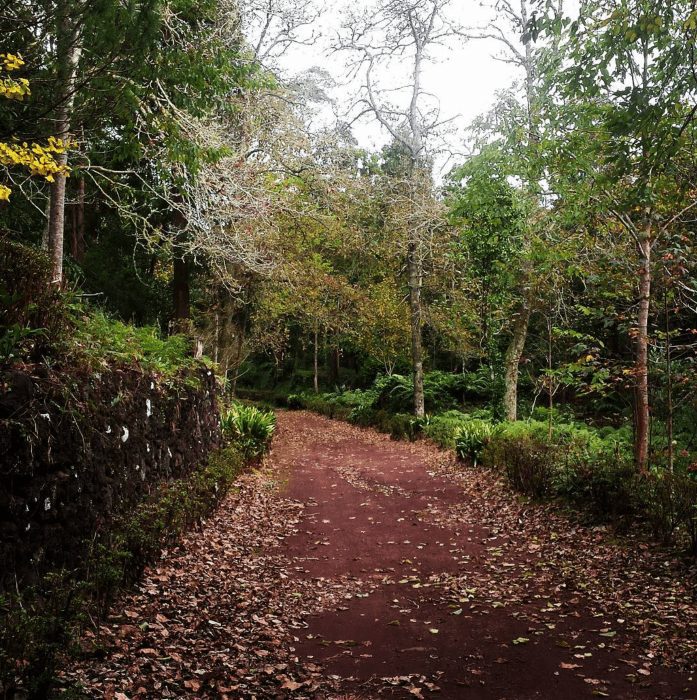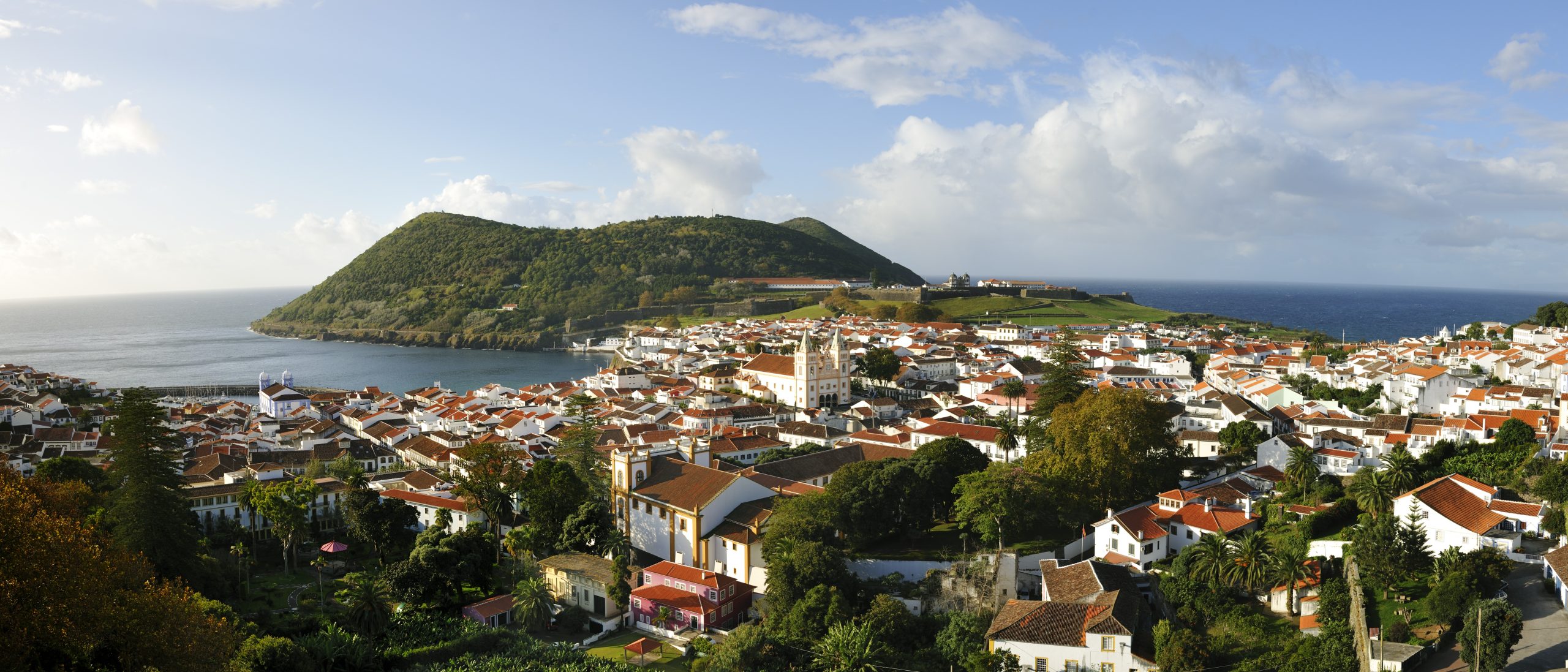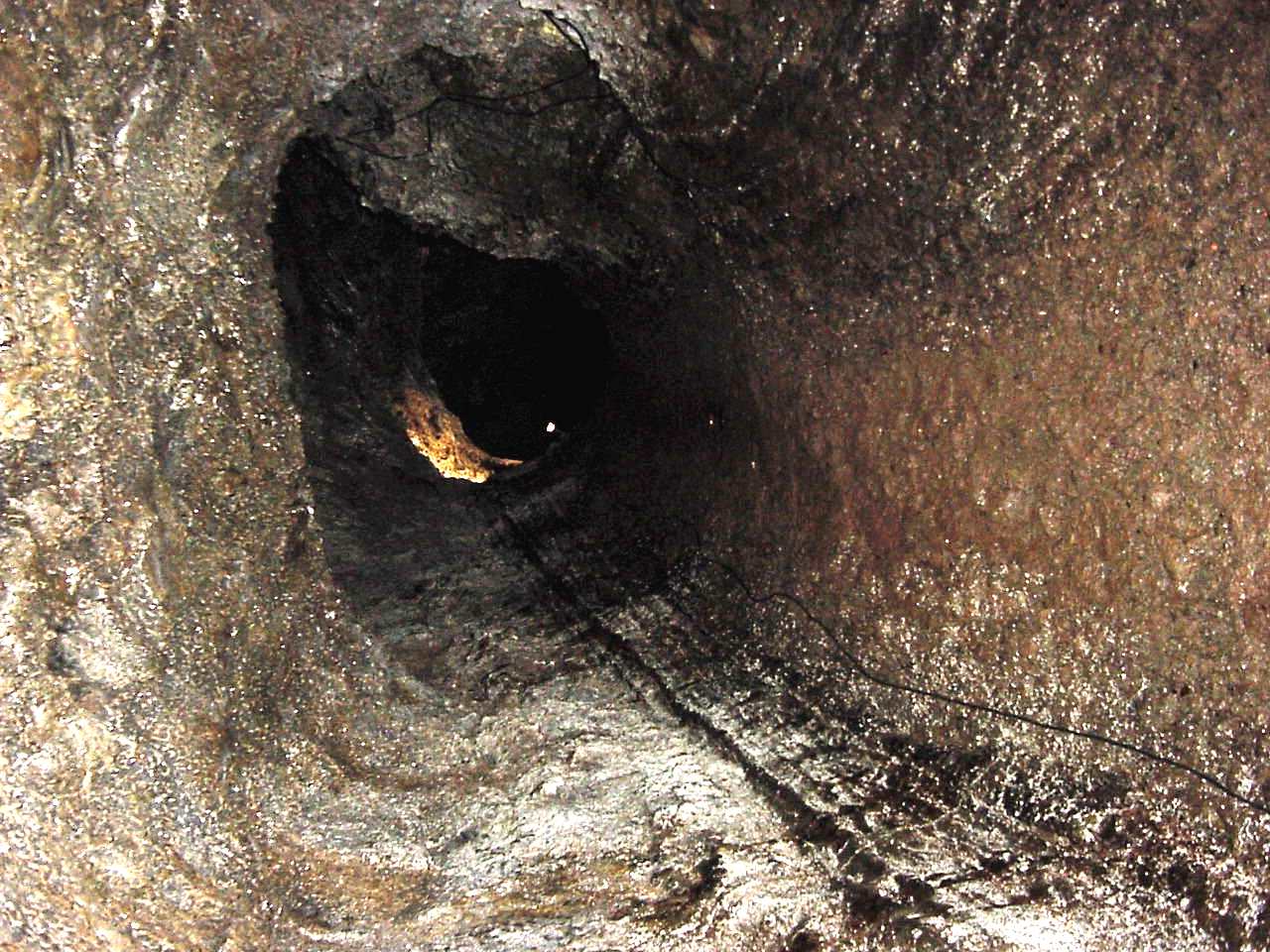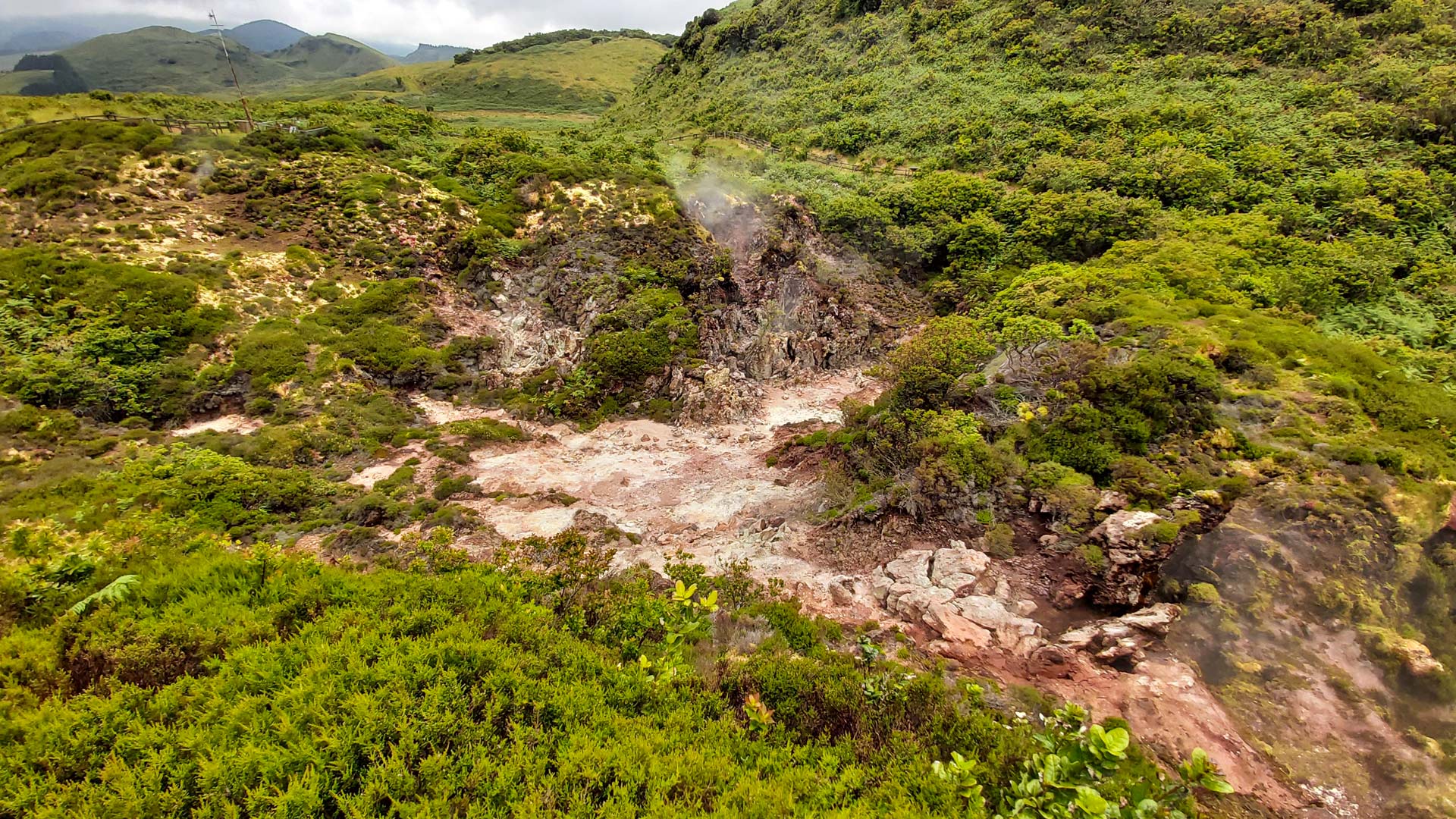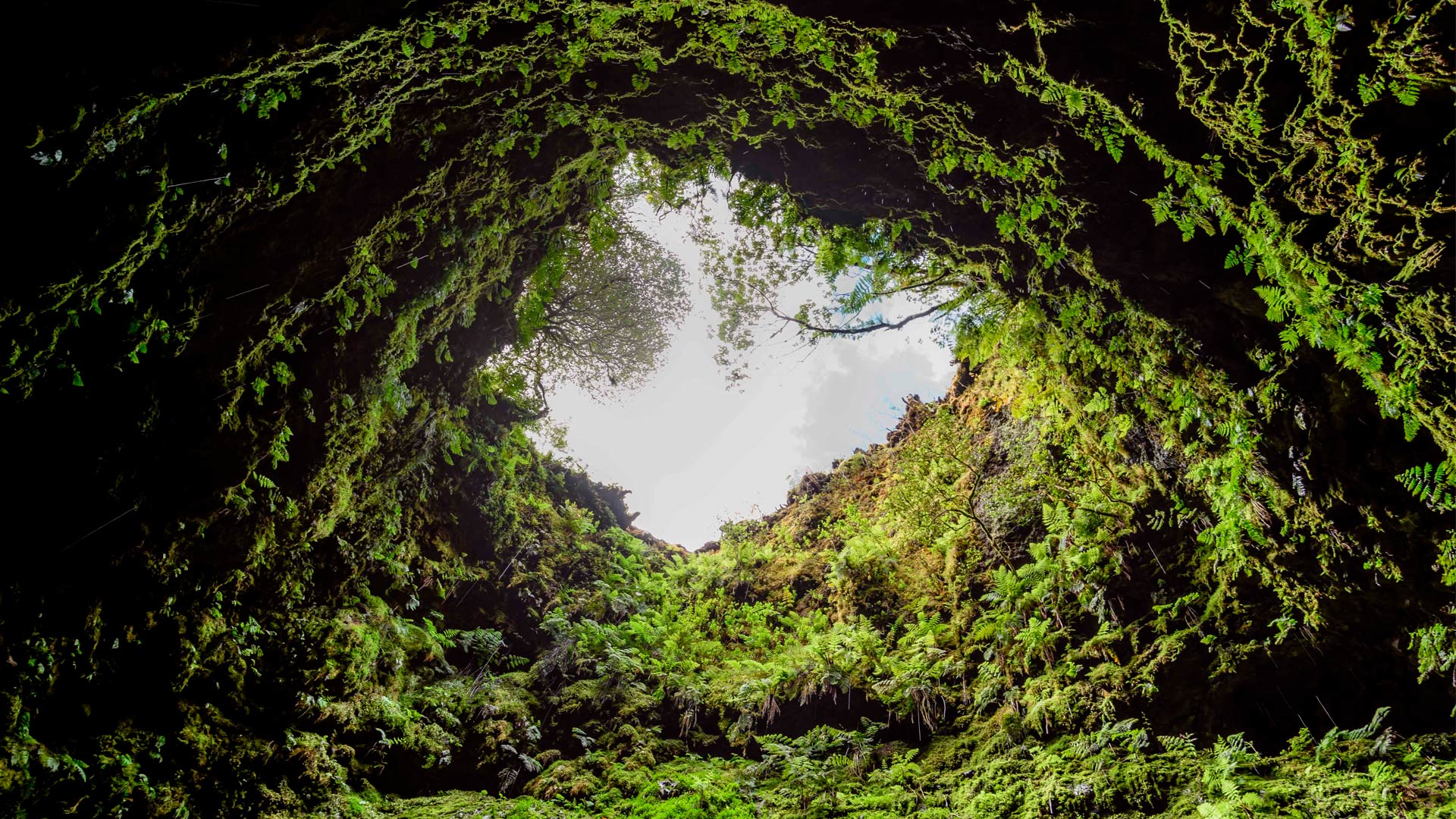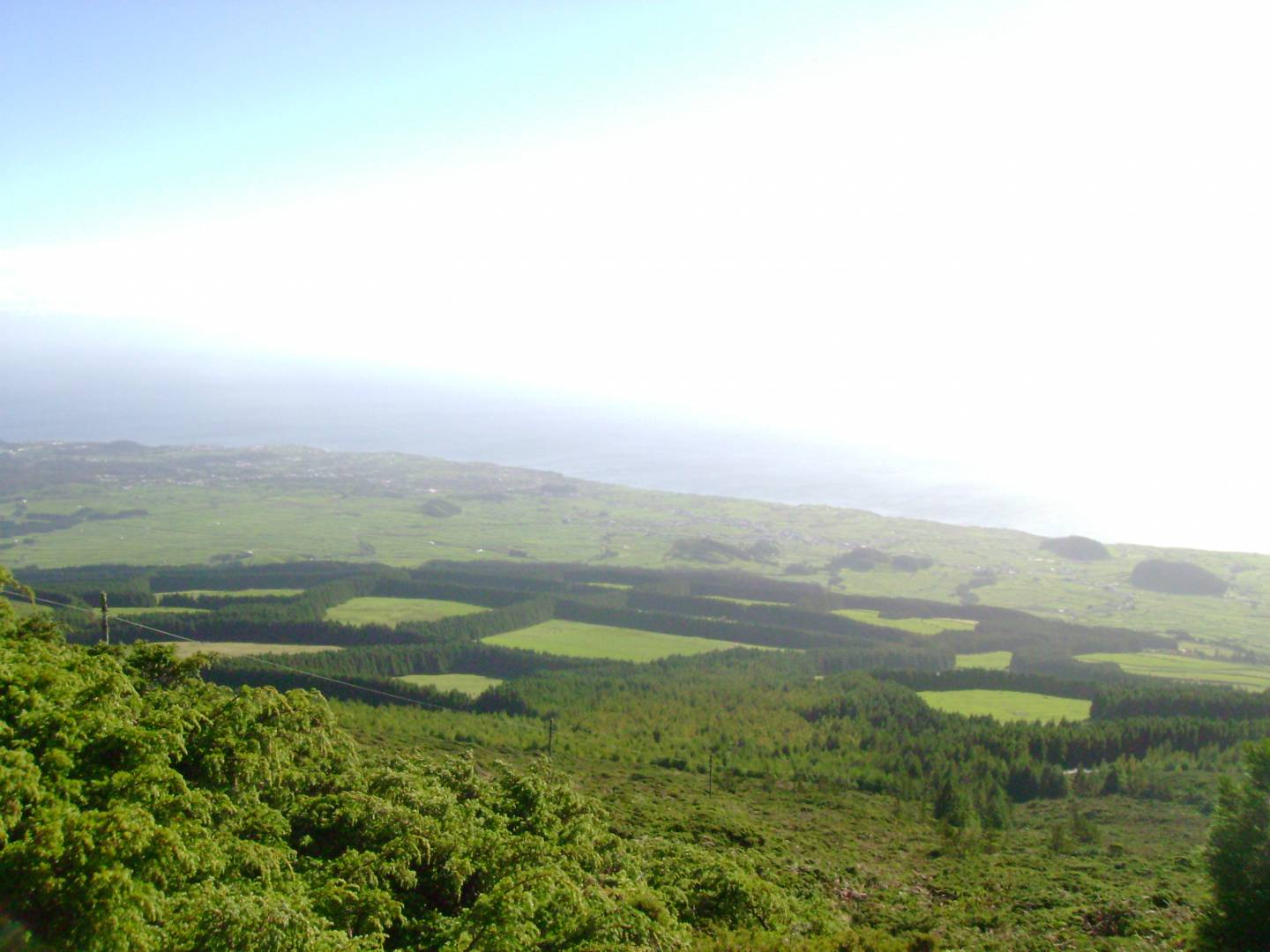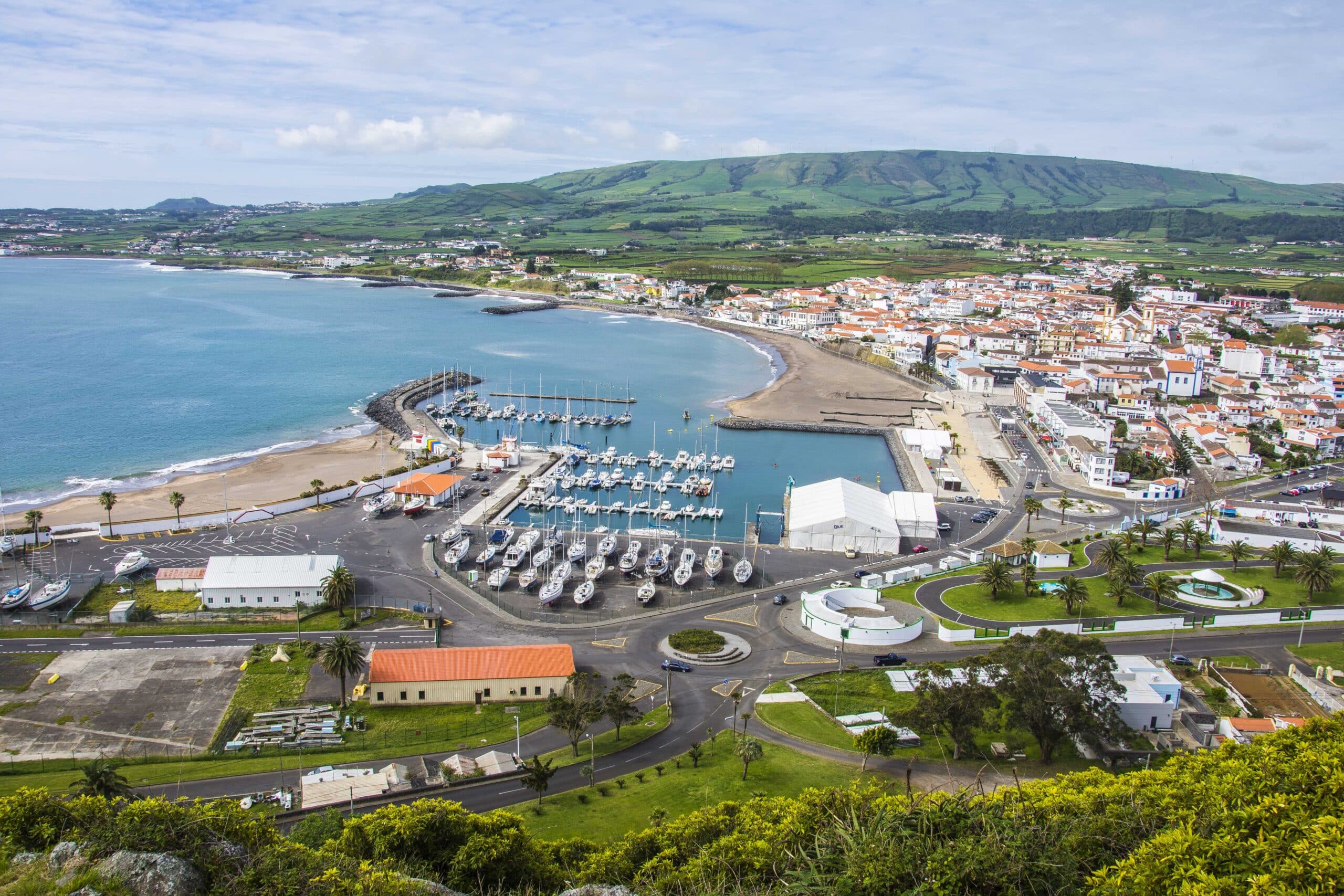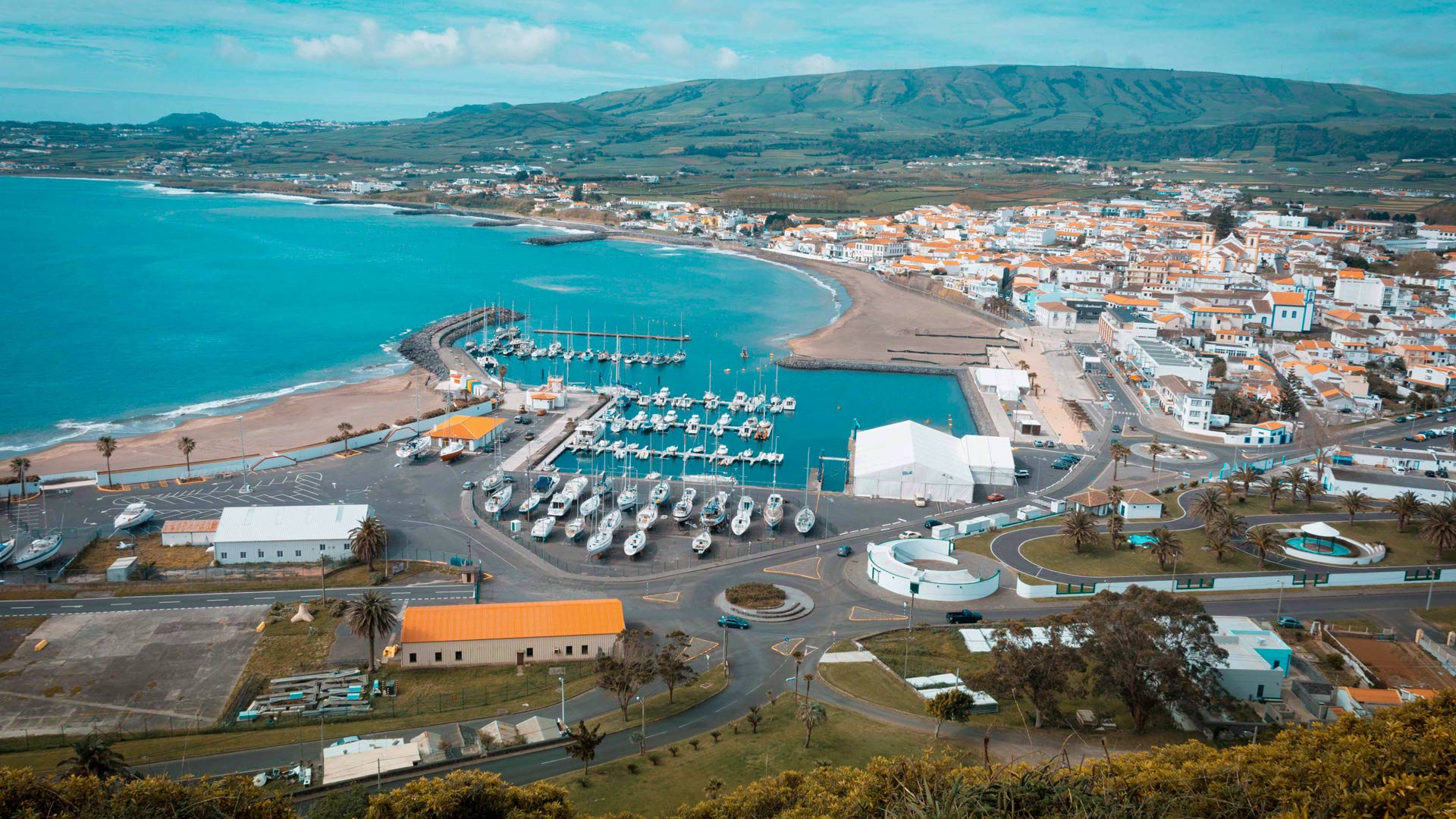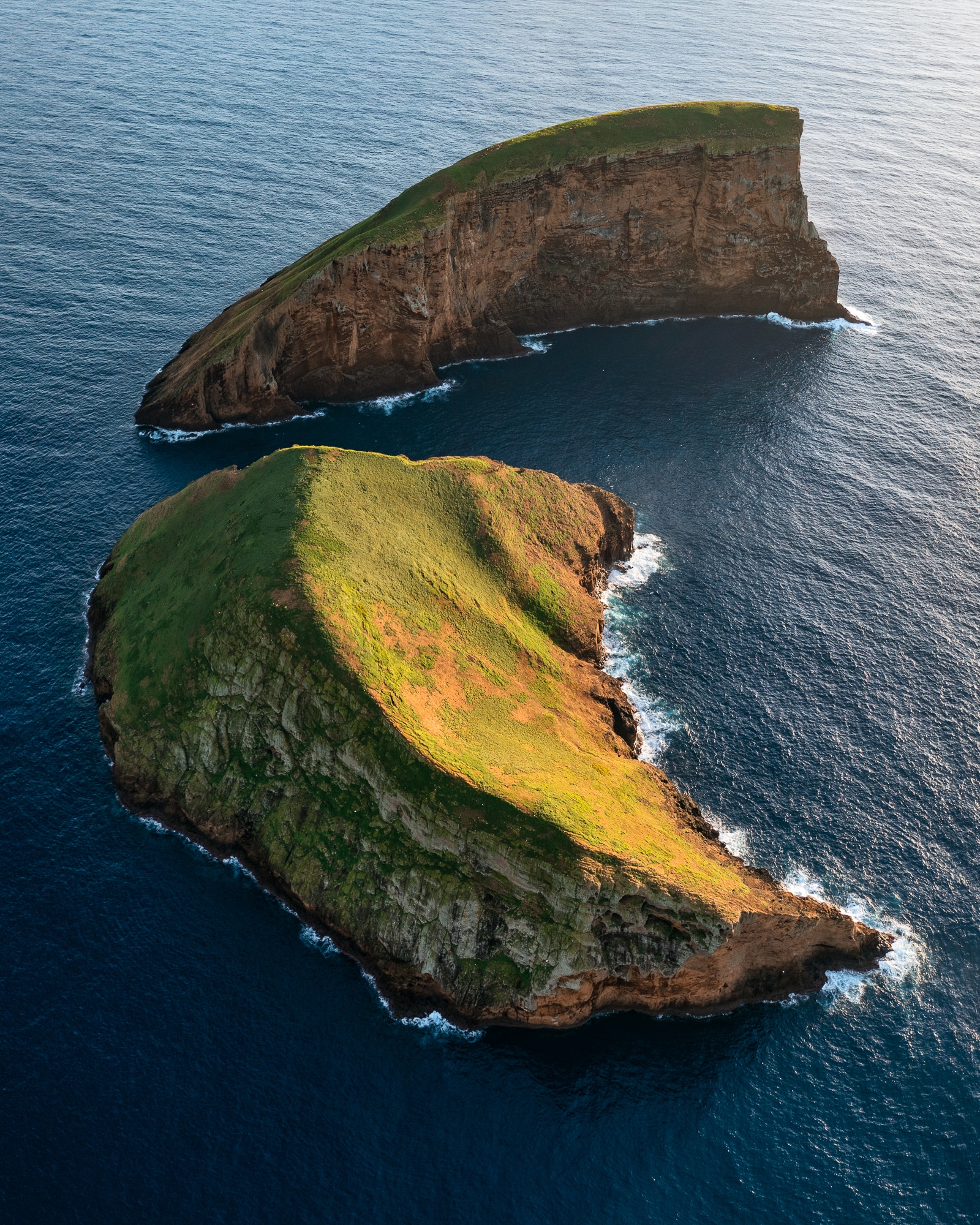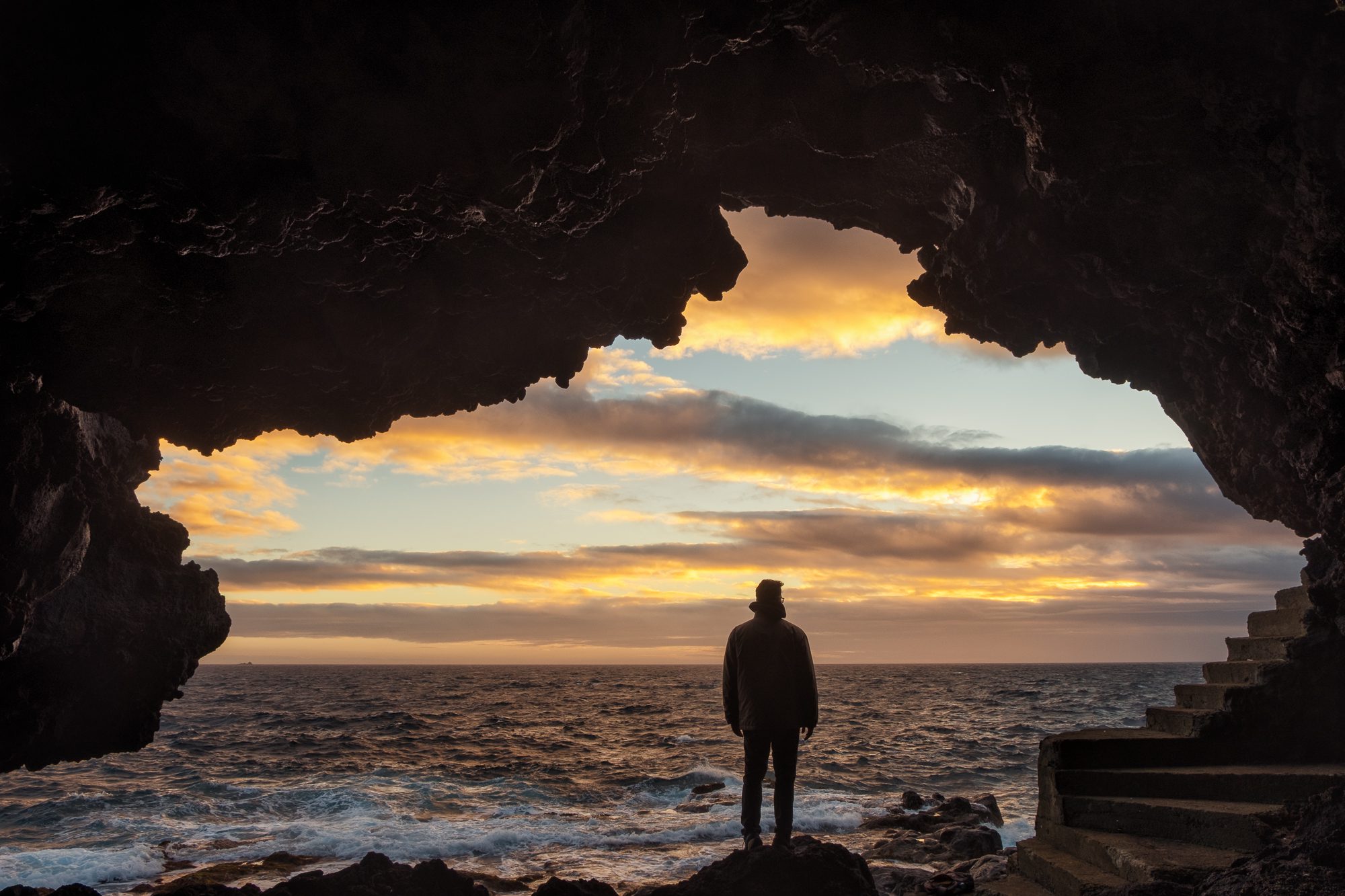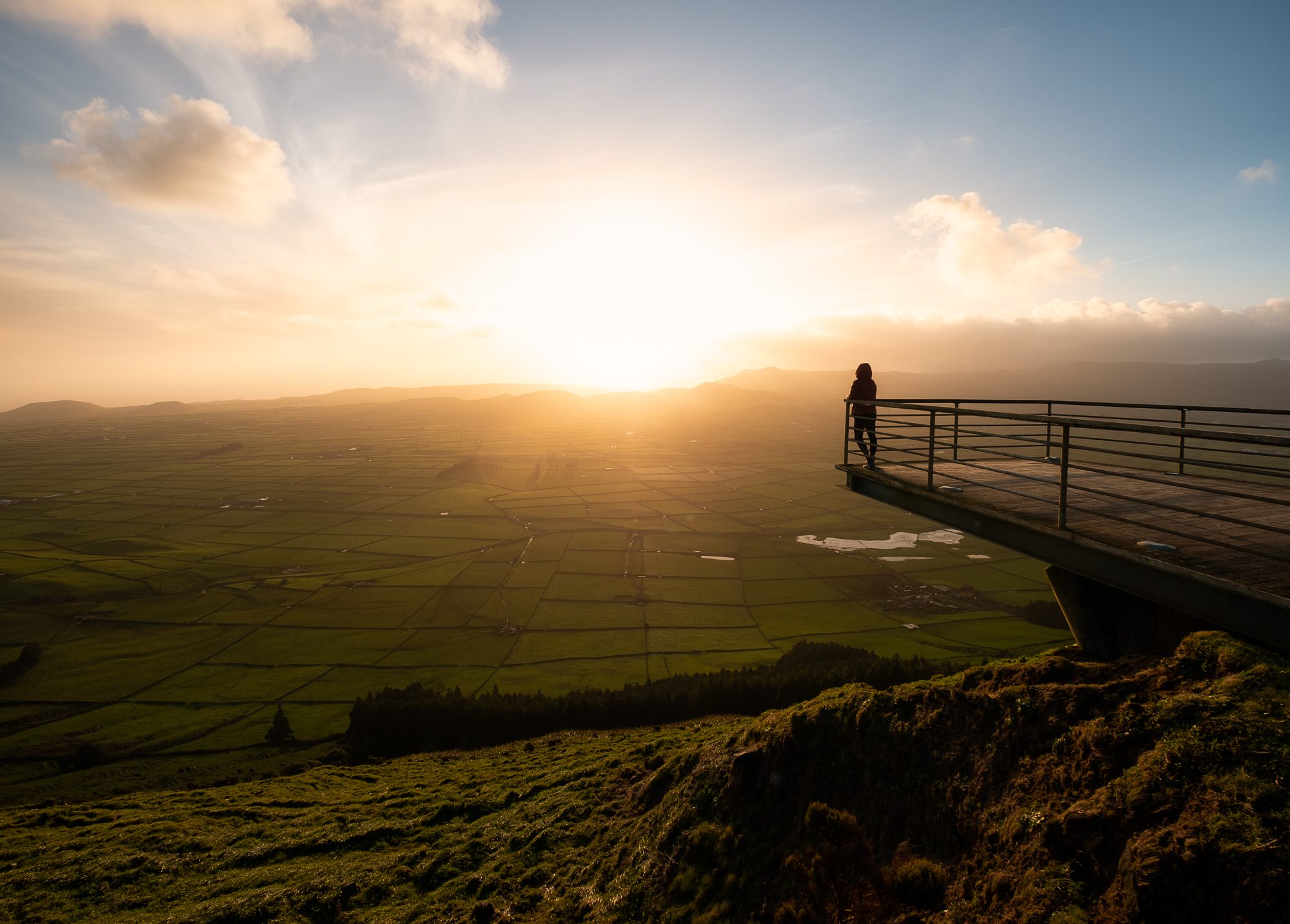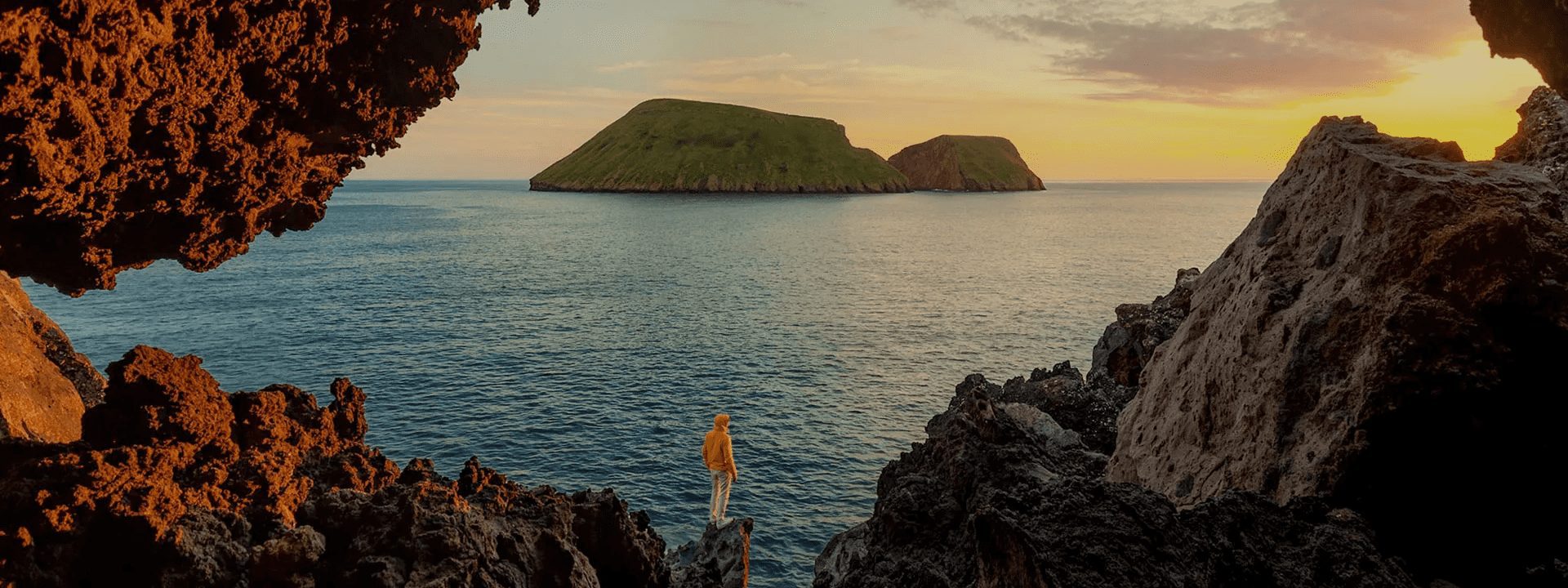Ponta das Contendas is a protected area that plays an important role in preserving Terceira Island’s native fauna and flora. It is a Special Protection Area (SPA), which means it plays a fundamental role in conserving the biodiversity of resident and migratory seabirds that use Ponta das Contendas as a nesting habitat.
In addition, people consider this site historical and cultural heritage because it played an essential role in defending the Azorean coast. Throughout this article, we’ll explain Ponta das Contendas, the importance of its biodiversity, and the main tourist attractions in the region.
What is Ponta das Contendas

Ponta das Contendas is a beautiful coastal area in Terceira, more specifically on the south coast of the island, near the parish of Porto Judeu. It offers panoramic views of the Atlantic Ocean.
Military forces inhabited this place in the past, leaving many ruins of forts built in the 16th and 17th centuries. These fortifications guarded the coast and ensured the protection of valuable shipments of gold, silver, and spices that arrived on the island from Asia, Africa, and America — mainly Brazil.
In addition to its historical importance, Ponta das Contendas is a “sanctuary” for the island’s native fauna and flora. It covers 93 hectares, including the coastal zone and adjacent islets, and is considered one of the most important protected areas in the Azores.
Geology & Volcanology
Ponta das Contendas forms part of the basaltic fissure zone, the island’s most recent volcanic system, consisting of basaltic lava flows. The area includes various rock formations, most of which are covered by pyroclastic layers and volcanic ash cover.
This volcanic complex has around 70 slag cones distributed around the Cinco Picos area and the Ponta das Contendas Protected Area for managing Habitats and Species.
Fauna & Flora
As previously mentioned, Ponta das Contendas is a Special Protection Area (SPA) part of the Natura 2000 Network and an Important Bird and Biodiversity Area (IBA) of Birdlife International. The site has a unique fauna and flora.
Here, we can see species endemic to the Azores, which UNESCO considers World Heritage Sites, such as:
- Heather (Erica Azorica);
- Spergularia Azorica;
- Rock Bracel (Festuca Petraea);
- Parsley (Daucus Carota Azoricus);
- Earth Beech (Myrica Faya);
- Willow (Tamarix Africana);
- Among others.
In terms of fauna, this protected area is home to important colonies of seabirds such as:
- Roseate Tern (Sterna Dougallii);
- Common Tern (Sterna Hirundo);
- Cory’s shearwater (Calonectris borealis);
- Yellow-footed gull;
- Rock Pigeon (Columba Livia);
- Azores starling (Sturnus Vulgaris);
- Sparrow (Passer Domesticus);
- Azores warbler (Sylvia Atricapilla);
- Goldfinch (Carduelis Carduelis);
- White-faced Cormorant;
- Black-winged Magpie;
- Bank Swallow.
- Among others.
Did you know
The main habitats of these species are shingle beaches, sea cliffs, and sea rocks (islets).
What to Do in Ponta das Contendas
Explore Contendas Bay
Contendas Bay is located in the village of São Sebastião, in the municipality of Angra do Heroísmo, in Terceira. It is part of the Special Protection Area (SPA) for wild birds at Ponta das Contendas — which protects birds from the Azores and migratory birds.

Quick Info
You can easily access the bay by sea or by land.
Seabeds of basaltic and trashy basaltic lava flows form the small cove, partially covered by pebbles and sandy clearings. This is where you’ll find the Mina Islet and its colonies of marine fauna. People often use this site for snorkeling to observe juvenile fish species harbored in the small caves, especially the Pagelus bogaraveo.
Visit the Ponta das Contendas Lighthouse

The Ponta das Contendas Lighthouse, also known simply as the Contendas Lighthouse, is located in the parish of Porto Judeu, in the municipality of Angra do Heroísmo, Terceira.
In 1928, construction began on the Contendas Lighthouse on the southeast coast of the island. Master builder António Tomaz, who had already led the construction of other lighthouses in the region, carried out the work. They inaugurated it on 1 February 1934.
This coastal lighthouse has a 13-metre-high white prismatic tower with a range of 23 miles (37.01 km), a red dome, and an annexed building. It has undergone some maintenance work over the years and is still in operation today — it was electrified and automated in 1998.
Watching the View From the Ponta das Contendas Viewpoint

The Ponta das Contendas viewpoint is located in the parish of São Bartolomeu de Regatos, in the municipality of Angra do Heroísmo, in Terceira. From here, you can see Ponta das Contendas, Baía da Mina or Mós, and a group of three islets in a high state of erosion.
On these islets, you can find the largest nesting colony of the Rosy Tern (Sterna dougallii) in the Azores and the second largest in Europe — a European migratory seabird species. In addition, in the Ponta das Contendas Protected Area for the Management of Habitats and Species, you can also see some specimens of flora endemic to the Azores and Macaronesia.
Walking the São Sebastião Fort Trail

The São Sebastião Fort Trail (PR05 TER) is located in the parish of São Sebastião, in Angra do Heroísmo. Inserted in the Cinco Picos volcanic massif, the trail runs along the southeast coast of the island and passes ancient maritime defense fortifications (16th and 17th centuries).
The route begins near the Ponta das Contendas Lighthouse and runs partly through the Ponta das Contendas Protected Area for the Management of Habitats and Species, which is also classified as a Special Protection Area (SPA) under the Natura 2000 Network.
With a linear route of approximately 5.9 kilometers, this trail has an “easy” degree of difficulty and an average duration of 2 hours and 30 minutes. Along the trail, you can observe various colonies of seabirds and species endemic to the Azores.
Quick Info
We recommend that you take suitable hiking shoes and a rucksack with waterproofs, a hat, sun cream, water, and snacks.
Along the trail, you will pass the following tourist attractions:
- Ruins of the Fort of Greta and the Fort of Santa Catarina das Mós;
- Baía das Mós;
- Pico dos Cernos;
- Ruins of the Bom Jesus Fort;
- Mina Islet;
- Pesqueiro dos Meninos Fort;
- Frei João Stream;
- Chapel of Nossa Senhora da Graça;
- Chapel of Sant’Ana.
Plan Your Visit to Ponta das Contendas
How to Get to Ponta das Contendas
Leaving the city of Angra do Heroísmo in the direction of Ponta das Contendas. You will have to travel around 15 kilometers to reach your destination. To make the journey to Ponta das Contendas, you have several options at your disposal: you can choose to travel by car, public transport, bicycle, or foot.
Following EN1-1A and EN1-2A, the journey takes approximately 19 minutes by car, 56 minutes by bicycle, 3 hours on foot, and 1 hour and 22 minutes by bus (you’ll change buses twice and count on 36 minutes on foot).
Best Time to Visit Ponta das Contendas
Due to its central location in the Azorean archipelago, Terceira’s climate is mild all year round. However, in the winter months, periods of rain and lower temperatures are more frequent. In this sense, the best time to visit Ponta das Contendas and other tourist attractions in the municipality of Angra do Heroísmo is usually between April and October, when the days get longer and the temperatures are higher.
However, cloudy skies are familiar throughout the archipelago. As a result, it may sometimes be challenging to appreciate the true splendor of some of the region’s beaches and viewpoints.
👉 Post related Best Beaches in the Azores Islands. Read more!
Where to Eat
If you need somewhere to eat near Ponta das Contendas, click here. In this link, you’ll find the 10 best restaurants on TripAdvisor.
Where to Stay
To make your life easier, we’ve filtered the search by:
What to Do Around Ponta das Contendas
Discover the Village of Porto Judeu

Located on the southeast coast of Terceira, Porto Judeu is a parish in the municipality of Angra do Heroísmo, 3.5 kilometers from Ponta das Contendas. This parish is rich in culture and traditions.
It was here that Jácome de Burges (the Donatory captain) and the island’s first settlers landed on a day of bad weather. The lousy weather and mediocre conditions of the small bay led people to call the place “Porto Judeu,” as they used to refer to anything bad as “Jewish” in those days.
If you’re passing through the village of Porto Judeu, don’t miss the opportunity to discover some of the attractions that this region has to offer, such as:
- Algar do Carvão;
- Furnas do Enxofre;
- Cruz do Canário viewpoint;
- Cabras Islet;
- Agulhas Cave;
- Refugo Bay;
- Ponta dos Coelhos viewpoint;
- Salga Bay;
- Salga House;
- Greta Fort,
- Among others.
Explore the Agulhas Cave
Just 1.8 kilometers from Ponta das Contendas, the Agulhas Cave is one of Porto Judeu’s main attractions. The mystery of its interior and the beauty of nature created thousands of years ago continues to attract tourists to the region.

Did you know
The Speleological Association “Os Montanheiros” discovered this “Lava Tube” in 1967. They named it after the abundant needle-shaped sedimentary formations on the cave’s ceilings and walls.
The lava tube has several branches, with the main gallery extending approximately 250 meters. The maximum height is 5.4 meters, and the maximum width is 4.5 meters. Inside the cave, you can see various geological structures such as stalactites, different types of lavas, and side counters.
Over time, the Agulhas Cave began to harbor various plants. Today, it is possible to see the presence of troglodytic species (present in caves/caverns) and endemic species:
- Pseudoblothrus volcanos;
- Macarorchestia martini;
- Pseudosinella ashmoleorum;
- Phthiracarus falciformis;
- Orchestia chevreuxi;
- Pseudosinella azorica.
Enjoy the Refugo Natural Swimming Pool

The Refugo Natural Swimming Pool is located in Refugo Bay in the parish of Porto Judeu, just 2.5 kilometers from Ponta das Contendas. This volcanic bay was once a fishing boat beach and later adapted into a bathing area. Today, it is one of the most popular seaside resorts on the island.
Here, you can enjoy a semi-natural swimming pool ideal for kids and adults — the average water temperature is around 22 °C in summer. This place has good facilities for bathers, such as a play area, showers, a bar, and toilets. It is also a beach recognized with the Blue Flag and as an Accessible Beach.
Contemplating the View from the Ponta dos Coelhos Viewpoint

Ponta dos Coelhos Viewpoint is located in Ponta dos Coelhos, in the parish of Porto Judeu, in the municipality of Angra do Heroísmo. It is close to the Refugo Natural Swimming Pool, just 500 meters away.
Did you know
The settlement of the parish began under the leadership of Senator João Coelho, son of Pêro Coelho, who accompanied Jácome de Bruges on his second trip to Terceira. Ponta dos Coelhos was named in his honor.
This viewpoint offers magnificent panoramic views of the Atlantic Ocean’s immensity. On clear days with favorable weather conditions, you can also see the Cabras Islet in the distance.
Discover Salga Bay
Salga Bay is the ideal place for those who like to swim in the sea and sunbathe. It is located in the village of São Sebastião, in the parish of Porto Judeu, in the municipality of Angra do Heroísmo. Salga Beach and the Salga Natural Swimming Pool make it up — both are much sought after and loved by youngsters.

Did you know
This bathing area was the “stage” of the famous Battle of Salga. In 1581, the people of Angra resisted Spanish rule by releasing bulls on the invaders. For two years, Terceira became the only independent Portuguese territory.
Located just twelve kilometers from the city of Angra do Heroísmo, the bay has an extensive grassy solarium, two pontoons with stairs leading down to the sea, and a semi-natural swimming pool that attracts thousands of visitors every year.
Here, you’ll find various facilities to support bathers, including car parks, access for people with reduced mobility, a bar, showers, and toilets. This seaside resort offers a guarded and safe beach, and every year, it earns recognition with the Blue Flag, Accessible Beach, and Golden Beach awards.
Check all our articles about each one of the most relevant points of interest on Terceira Island: Algar do Carvão | Biscoitos | Furnas do Enxofre | Gruta do Natal | Jardim Duque da Terceira | Lagoa das Patas | Miradouro Serra do Cume | Miradouro da Serra de Santa Bárbara | Monte Brasil | Ponta das Contendas | Praia da Vitória | Gruta das Agulhas | Ilhéus das Cabras | Miradouro do Facho
Complementary Information
Best Season to Visit the Azores
The Azores Archipelago boasts a unique climate that shapes its lush landscapes, making it a splendid year-round destination. With mild temperatures and minimal fluctuations, each season offers something unique. Spring averages 16 °C, summer reaches 21 °C, autumn cools to 18 °C, and winter remains mild at 14 °C.
→ For a detailed breakdown of the weather by month, check the following links 🌤️☔️: January | February | March | April | May | June | July | August | September | October | November | December
How to Get to the Azores
The Azorean Archipelago is easily accessible through numerous flight routes. Lisbon and Porto are the main entry points to the continent, with direct flights available to São Miguel (PDL), Terceira (TER), Faial (HOR), Pico (PIX), and Santa Maria (SMA). To find the best flight, use search engines like eDreams or Skyscanner. These platforms let you compare prices and schedules from multiple airlines in one convenient location.
For more details on how to get to the Azores, take a look at our complete guide. But what if you want to explore beyond your arrival island? We’ve got you covered!
- Azores airports 🛬
- Flights between islands ✈️
- Ferries between islands ⛴️
- Which island to choose? 🏝️
- What airlines fly to the Azores? 🛩️
→ Once you’ve found the perfect route, book your tickets and get ready to experience one of the world’s most stunning island groups!
Travel Essentials
Essential Information for your Azores trip: Azorean Language & Phrases 🗣️ | Currency & Banks 💵 | Credit Cards & Traveler’s Cheques 🏧 | Driving in the Azores 🚗 | Electricity 🔌 | Experiences & Tours 🗺️ | Health & Safety 🩺 | Internet & Wi-Fi Access 🛜 | Phones & Mobile Service 📞 | Post Offices & Buying Stamps ✉️ | Public Holidays 🏖️ | Shopping 🛒 | Time & Daylight 🕒 | Whale Watching Guide 🐳 | Best Island to Visit 🏞️
Useful Tools & Apps
The weather in the Azores can be variable, so it’s helpful to use some apps before visiting the islands. Spotazores provides live camera feeds from the main tourist attractions, allowing you to check the weather and plan your visit. For accurate weather predictions, use Windy or Windguru — they provide the most reliable predictions.
Video
Conclusion
The Terceira coast fills Ponta das Contendas with exceptional beauty. In addition to its internationally renowned educational, geological, and biological interests, it is the ideal place for those who enjoy being in contact with nature. Here, you’ll have the opportunity to visit various tourist attractions such as the Gruta das Agulhas, Salga Bay, the Refugo Swimming Pool, and the Ponta dos Coelhos Viewpoint.
So, if you’re passing through Terceira, don’t miss out on Ponta das Contendas and take the opportunity to visit the city of Angra do Heroísmo and the village of Porto Judeu. With its enormous heritage value, this is an excellent option for those who want a relaxing holiday in contact with nature.







